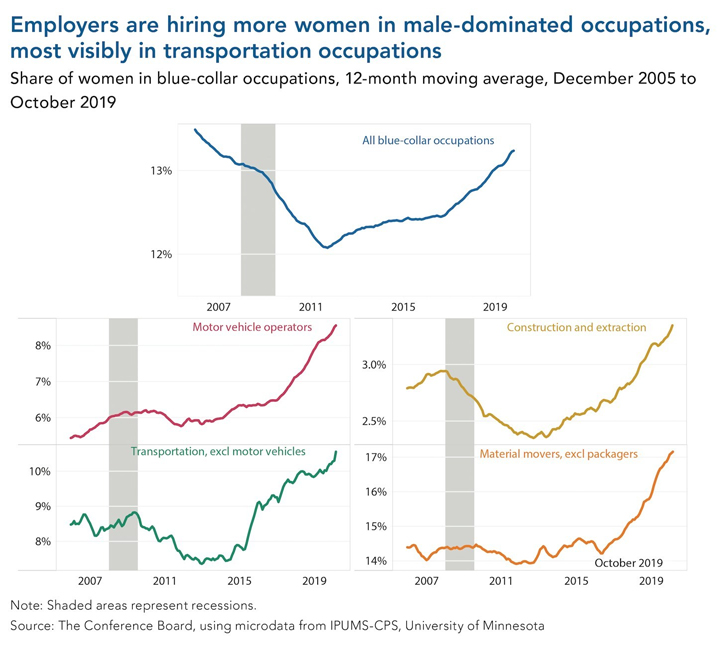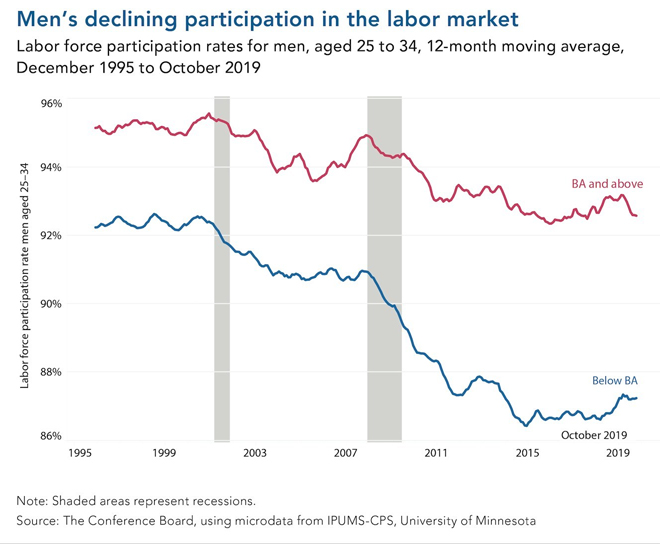America’s businesses are facing the huge challenge of staying competitive amidst record labour shortages, according to the latest research by The Conference Board. The report entitled: US Labor Shortages: Challenges and Solutions reveals the causes behind the country’s current lack of labour and how companies are responding. It suggests that companies are simply not doing enough to retain mature workers as a key tactic to ease labour shortages. In fact, this invaluable labour pool continues to be a ‘blind spot’ for many employers. The Conference Board advises businesses to extend outreach ‘beyond the usual recruits’ to remain competitive because labour shortages, particularly in blue-collar jobs, are likely to continue until 2030.
If not, the country could face one of the worst labour shortages of the last 50 years, particularly for companies that employ blue-collar and manual services workers. “Without a concerted effort by companies and governments, the nation’s overall standard of living will decline, along with profits in blue-collar-heavy industries such as transportation, warehousing and manufacturing,” it warns.
IMPROVING WORKFORCE DIVERSITY
On a positive note, workforce diversity is improving. Women are making record gains in employment. Part of this gain reflects the rising share of women in traditionally male-dominated blue-collar occupations, especially in transportation, as the chart below demonstrates.
There are also signs that companies are widening their talent pools by increasing their efforts to recruit other underrepresented populations such as minorities, the disabled, immigrants, the previously incarcerated and veterans.

MAIN CHALLENGES
So what are the main challenges of the labour shortages for employers? Increased labour turnover is straining business operations, according to the report. Rapid wage growth, especially amongst new hires, has led to increased job-hopping. With the voluntary quits rate well above the 2007 rate and the time needed to fill positions reaching historic highs, many companies are operating with unfilled positions and overstretched workforces.
As a result, labour quality is a rising concern. Given the perceived difficulty of finding qualified candidates, employers are hiring less-educated workers, which is affecting labour quality. Accelerating wages that squeezing corporate profits is also a huge challenge. Increasing wages and quit rates, along with slow labour productivity, are reducing US corporate profits, and it’s a “trend that will continue in the coming years as the labour market continues to tighten”, cautions The Conference Board.
WORKER BENEFITS
The labour market for jobs that do not require a college degree is actually tighter than for highly educated white-collar workers. So, for the first time in recorded history, wage growth for management and professional workers is significantly lower than for other occupations. At the same time, rapid wage acceleration for new hires is contributing to historic levels of pay compression and higher labour turnover. While companies are facing severe challenges in recruiting and retaining workers, plentiful job opportunities and rising wages have contributed to improved employee job satisfaction for nine consecutive years. The prolongued tight labour market has also led to wage gains for those at the bottom of the wage income distribution, resulting in record-low poverty rates for Black and Hispanic workers.
The shrinking labour pool is as a result of retiring Baby Boomers, who perform much of the nation’s blue-collar work, now leaving the workforce in droves. Amidst this Baby Boomer exodus, there’s dismal growth in the working-age population which has ‘largely stopped growing’, according to the report. “The US economy has never before experienced a swell of retirements amid near-zero growth in its working-age population,” notes The Conference Board.
DECLINING MALE PARTICIPATION
Although the tight labour market has brought more individuals into the workforce, participation hasn’t grown fast enough to prevent it from further tightening. In fact, the report reveals a declining participation of men in the workplace, particularly for those without a college degree (see chart below). Apart from more men (between the ages of 25-34) being single, many live with their parents and have less of a need to earn an income.

The large increase in disability rates isn’t helping either. The share of people not in the labour force due to disability has soared and is now at a record high, with a strong concentration in the South and the Midwest. Young adults (between the ages of 16-24) pursuing further education/college instead of trades are also adding to the shortage. The growing share of young adults enrolling in four-year colleges means that the number of those without a bachelor’s degree – those who typically choose blue-collar jobs – continues to shrink.
POPULAR SOLUTIONS
According to the study, companies are resorting to several tactics to combat the declining labour shortages. Increasing salaries and wages is currently the most popular tactic used.
Other frequently cited solutions include increasing referrals, ramping up social media, shortening the recruitment process and extending outreach beyond the usual recruits. According to the study, around 51% of blue-collar-heavy companies indicated that they had added or modified an employee referral programme, compared to only 21% of white-collar-heavy companies.
Increasing social media efforts ranked as the second most popular recruitment strategy (69%) amongst blue-collar-heavy companies, behind increasing wages and salaries (79%). Many are also shortening the recruitment process, as 37% of blue-collar firms have experienced candidates ghosting interviews. As a result, the most affected companies have responded by eliminating the need for multiple interviews.
MATURE WORKER BLIND-SPOT
Finally, more companies are extending outreach beyond the usual recruits. Around 55% of blue-collar-heavy companies ranked expanding the target demographic as a key tactic, compared to just 30% of white-collar-heavy companies.
However, providing new incentives to retain older workers in full or partial capacity, is currently the lowest-ranked retention strategy, confirmed The Conference Board findings. The report notes that it’s a ‘blind spot’ for many who could actually be doing more to retain mature workers, and use it as a key tactic to ease the country’s labour shortages.
Click here for more information about the report.








































